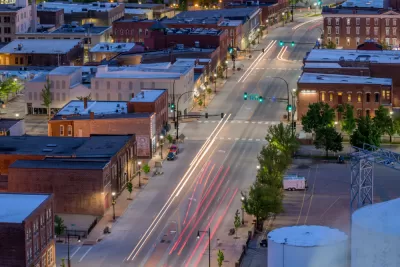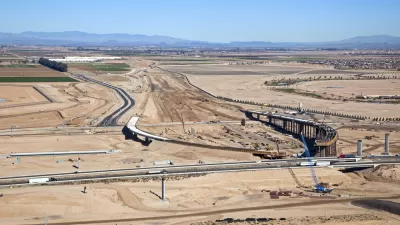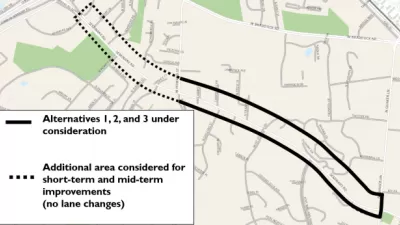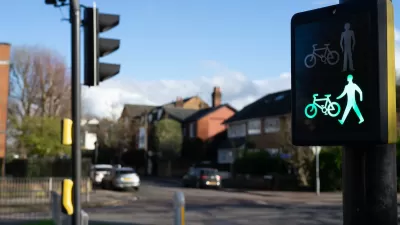The Federal Highway Administration (FHWA) released a report to Congress this week that takes initial steps toward making complete streets the default model for funding and designing federally controlled roads.

The Federal Highway Administration (FHWA) on Wednesday published a new report that adopts complete streets as the default approach for funding and designing the majority of federally funded roadways in the United States, according to an FHWA press release.
The "Moving to a Complete Streets Design Model: A Report to Congress on Opportunities and Challenges" report focuses on non-access-controlled roadways—i.e., not freeways, but urban arterials and small town main streets.
The Complete Streets design model will address rising traffic fatalities by implementing designs that reduce speeds, "making it a key component of FHWA’s implementation of the U.S. Department of Transportation’s National Roadway Safety Strategy," according to the press release.
To achieve its goals, the FHWA's complete streets program will focus on five opportunity areas:
- Improved data collection and analysis.
- Rigorous safety assessment during development and design.
- Accelerated adoption of standards and guidance.
- Reinforcing safety as a top priority.
- Complete streets as a default approach.
As noted in the press release, the Infrastructure Investment and Jobs Act (IIJA) approved by Congress at the end of 2021 also includes new priorities on Complete Streets, including a requirement that states and metropolitan planning organizations use at least 2.5 percent of their planning funding on activities related to Complete Streets or travel on foot, by bike, in a vehicle or using public transit. The IIJA "also continues to provide funding for Complete Streets activities through Rebuilding American Infrastructure with Sustainability and Equity (RAISE) grants and the National Highway Performance Program," adds the press release. "Surface Transportation Block Grant Program funds can also be used for Complete Streets implementation," and the FHWA also recently released guidance for the Highway Safety Improvement Program, which can be used for Complete Streets projects and received an additional $4 billion in funding, as documented by Planetizen in an article from November 2021.

Planetizen Federal Action Tracker
A weekly monitor of how Trump’s orders and actions are impacting planners and planning in America.

San Francisco's School District Spent $105M To Build Affordable Housing for Teachers — And That's Just the Beginning
SFUSD joins a growing list of school districts using their land holdings to address housing affordability challenges faced by their own employees.

The Tiny, Adorable $7,000 Car Turning Japan Onto EVs
The single seat Mibot charges from a regular plug as quickly as an iPad, and is about half the price of an average EV.

Seattle's Plan for Adopting Driverless Cars
Equity, safety, accessibility and affordability are front of mind as the city prepares for robotaxis and other autonomous vehicles.

As Trump Phases Out FEMA, Is It Time to Flee the Floodplains?
With less federal funding available for disaster relief efforts, the need to relocate at-risk communities is more urgent than ever.

With Protected Lanes, 460% More People Commute by Bike
For those needing more ammo, more data proving what we already knew is here.
Urban Design for Planners 1: Software Tools
This six-course series explores essential urban design concepts using open source software and equips planners with the tools they need to participate fully in the urban design process.
Planning for Universal Design
Learn the tools for implementing Universal Design in planning regulations.
Smith Gee Studio
City of Charlotte
City of Camden Redevelopment Agency
City of Astoria
Transportation Research & Education Center (TREC) at Portland State University
US High Speed Rail Association
City of Camden Redevelopment Agency
Municipality of Princeton (NJ)





























